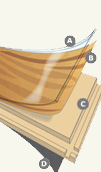
Figure 1 - Laminate flooring construction
From bottom to top:
Backing Layer (D):
The backing layer is the layer of material that rests on the sub-floor or underlay. Generally made of resin saturated paper, it creates the moisture barrier that helps protects the floor from warping due to condensation being trapped between the sub-floor and the finished floor.
Inner Core Layer (C):
Stability and structural strength of laminate flooring material is provided by the inner core layer. The inner core layer is made of high-density fiberboard (HDF) usually impregnated with melamine, a plastic resin, which creates a stronger, more stable and higher level of moisture resistance. The inner core layer can vary from 6 to 12 millimeters. The thicker the inner core layer the less chance that the floor will warp and be damaged by moisture.
Note: Products that have higher levels of plastic resin do not need to be acclimatized prior to installation.
Image Design Layer (B):
This is what you see, a photograph. It can be a picture of any species of hardwood, ceramic or porcelain tile, a geometric or random pattern. In fact it can be a photograph of anything imaginable.
Wear Layer (A):
This is the laminate flooring’s surface finish. The surface finish generally contains aluminum oxide that is helps to prevent the laminate flooring from staining, fading and increases the resistance to wear.
Note: Most laminate flooring will have an abrasion classification (A/C). For installation in residential applications the A/C should be a minimum of 3.
There are two different manufacturing techniques used to bond the layers of the laminate flooring to one another and they both have advantages and disadvantages.
Direct Pressure Laminate:
Direct pressure laminate or DPL is the most widely used process for bonding the layers of a laminate floor. DPL is the least expensive of the 2 processes and has the same resistance to gouging when objects fall from or at counter height. It is an easier method to emboss and hence provides a more realistic surface texture.
High-Pressure Laminate:
High-pressure laminate or HPL provides for a much harder surface. HPL is a more expensive manufacturing process than DPL and is less likely to gouge if items are dropped from higher than a counter top height. Because it produces a harder finished product, it is more difficult to emboss and hence the finished laminate flooring may not look as realistic.
As with any flooring product a laminate flooring material at $1.00 a sq. ft. will most likely not perform as well and last as long as a product that is $3.00 sq. ft.
